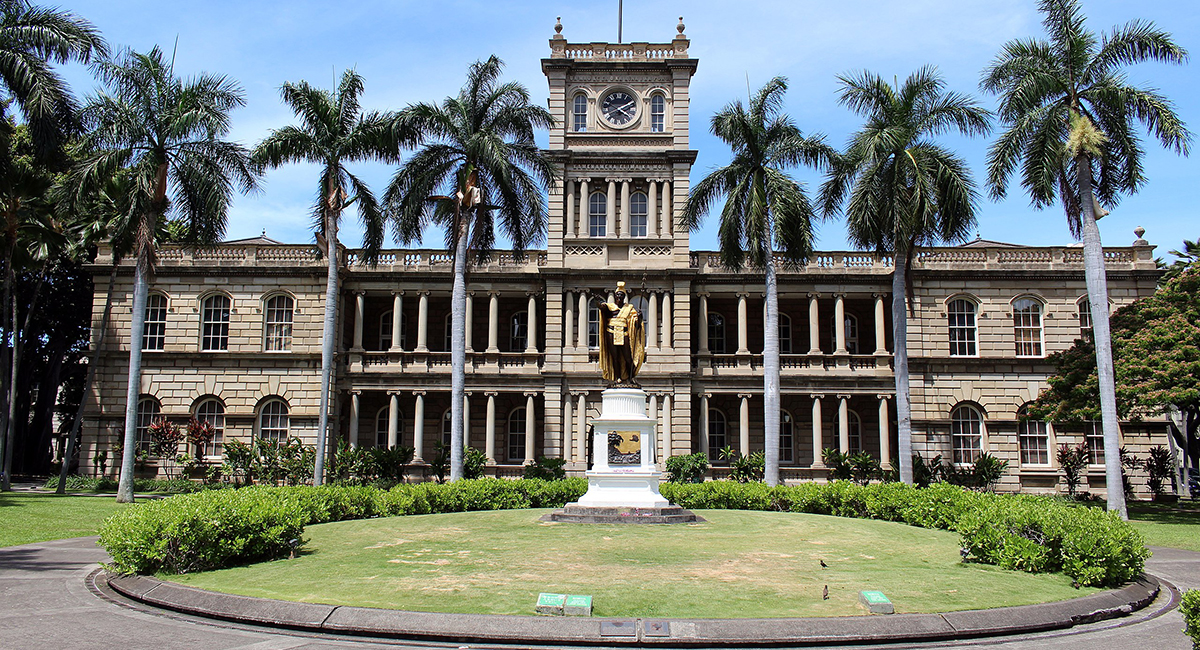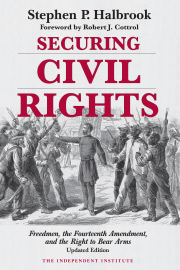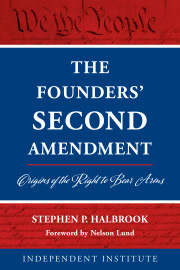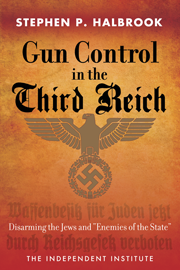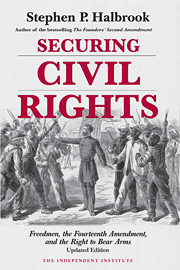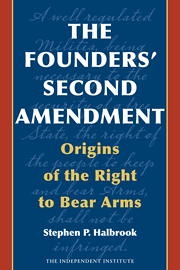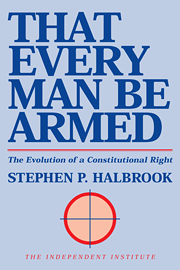On February 7, the Supreme Court of Hawai’i decided State v. Wilson, upholding state criminal laws confining handguns and ammunition to the “possessor’s place of business, residence, or sojourn.” A separate provision provides for permits to carry (which historically no one got), but the defendant had not applied for a permit and thus had no standing to challenge that provision.
Article I, § 17 of the Hawai’i Constitution has the same language as the federal Second Amendment, just deleting the first and last comma. Wilson held that § 17 “supports a collective, militia meaning,” and thus “in Hawai’i there is no state constitutional right to carry a firearm in public.”
Citing Justice Stevens’ dissent in Heller and Justice Breyer’s dissent in Bruen, Wilson claims that the U.S. Supreme Court “distorts and cherry-picks historical evidence. It shrinks, alters, and discards historical facts that don’t fit.” The Court’s failings are not limited to the issue at hand—“the Dobbs majority engaged in historical fiction” as well. Wilson avers: “The United States Supreme Court disables the states’ responsibility to protect public safety, reduce gun violence, and safeguard peaceful public movement.”
Wilson fails to analyze the actual precedents when it asserts: “Until Heller, the Supreme Court had never ruled that the Second Amendment afforded an individual right to keep and bear arms.” Well, the Court assumed that the right is individual in Scott v. Sandford (1857), U.S. v. Cruikshank (1876), Presser v. Illinois (1886), Robertson v. Baldwin (1897), U.S. v. Miller (1939), Johnson v. Eisentrager (1950), and U.S. v. Verdugo-Urquidez (1990).
According to Wilson, both § 17 and the Second Amendment “use military-tinged language—‘well regulated militia’ and ‘bear arms’—to limit the use of deadly weapons to a military purpose.” However, “there are no words that mention a personal right to possess lethal weapons in public places for possible self-defense.” But this ignores that the guarantee has two separate clauses—one declaring the necessity of the militia, the other declaring the right of the people to bear arms. Wilson implies that the militia are the only “people,” as if the guarantee refers to “the right of the militia to bear arms.”
The court doesn’t bother to compare the usage of “the people” with other parts of the state Bill of Rights, which prohibits abridgment of “the right of the people peaceably to assemble,” provides that “the right of the people to privacy ... shall not be infringed,” and guarantees “the right of the people to be secure ... against unreasonable searches, seizures and invasions of privacy....” By contrast, in the very next provision after the arms guarantee, the drafters knew how to distinguish “the people” from “member[s] of the militia” by providing that “no soldier or member of the militia” may be quartered in any house except in certain circumstances.
Quoting Justice Stevens’ dissent in Heller, the court stated that “when used unadorned by any additional words, its meaning [i.e., bear arms] is ‘to serve as a soldier, do military service, fight.’” But there are additional words—the “right” of “the people” to bear arms.
The court acknowledged that most state constitutions protect individuals because they refer to “persons” and “citizens,” but ignores that several also refer to “the people.” Many follow variants of Pennsylvania’s 1776 Constitution by stating that “the people have a right to bear arms for the defence of themselves and the state.” But, says Wilson, § 17 doesn’t refer to “defence of themselves.” Right, but it also doesn’t refer to “defence of the state.” It generally recognizes the right to bear arms, impliedly for all lawful purposes, just as the U.S. Supreme Court did in the Heller decision.
The fun begins when the court sought to explain the public understanding when the guarantee was adopted in 1950, but leaves out critical parts of that history. In written testimony to the Hawai’i legislature in 1992 in opposition to a proposed ban on semiautomatic firearms, I had occasion to research the 1950 proceedings. The legislature ended up banning only what it called “assault pistols” defined by certain generic features. Below are some of the critical items that Wilson left out.
Wilson does not mention the manual prepared by the Legislative Reference Bureau and distributed to all members of the 1950 constitutional convention, which stated: “The rights of persons may be considered under two categories—the rights of persons in normal course of living (civil rights), and rights of persons accused of crime. Under the first category may be included the freedom of speech and press, of assembly, of conscience (religion), and the right to bear arms.” Manual on State Constitutional Provisions Prepared for the Constitutional Convention, Territory of Hawaii 345 (1950).
Wilson quotes a committee report stating that the guarantee “incorporates the 2nd Amendment” but “should not be construed as to prevent the state legislature from passing legislation imposing reasonable restrictions upon the right of the people to keep and bear arms.” Stand. Comm. Rep. No. 20.
But Wilson neglects that Delegate Jack H. Mizuha, Chairman of the Committee on Bill of Rights, read those very words when bringing the provision before the convention and explained that the term “the people” “applies to all persons here in the territory.” Delegate Phillips asked, “To each individual or to them as a group? ... Well, you say ... ‘the militia,’ and then ... after the comma, ‘the right of the people to keep and bear arms.’ Do you mean there the right of the individual or the right of the—....” Mizuha replied, “All individuals. ... Individual rights, the Constitution is for individuals.” 2 Proceedings of the Constitutional Convention of Hawaii, 1950, at 11-12 (1961).
Mizuha also noted that the Committee heard from representatives of rifle clubs and gun clubs, who obviously supported the guarantee to support their rights, as well as police and prosecutors, who wished to keep current restrictions. If the guarantee was thought to protect the “right” of the National Guard to bear arms, why weren’t Guard spokespersons testifying in its favor?
In further debates, reference was made to the restrictions on machine guns in the National Firearms Act. The delegates were assured that the arms guarantee would not prevent banning such weapons. But no one suggested that commonly-possessed rifles, shotguns, and handguns could be banned.
Delegate Bryan supported the guarantee because “the law-abiding citizens of this territory are entitled to have firearms for their own protection, for sportsmanship, for target practice and so forth.” Delegate Fukushima had the final word, stating that the guarantee “will protect all the people from [sic] keeping and bearing arms, subject of course to reasonable restrictions.” It was then adopted unanimously by the Committee of the Whole.
Wilson quotes the report of that Committee stating that the guarantee “will not render invalid the existing laws of the Territory ... relating to the registration, possession and carrying of firearms,” nor would it “prevent other reasonable restrictions on the right to acquire, keep or bear firearms or other weapons,” including prohibitions on “the possession of such modern and excessively lethal weapons as machine guns, silencers, bombs, atomic weapons, etc.” Comm. of the Whole Rep. No. 5.
All of these referenced laws applied to the people at large, and so it was relevant to say this only because the guarantee protects individual rights. None of these listed laws applied to the National Guard, which was equipped with machine guns and bombs. The state has power to regulate the National Guard unconstrained by the arms guarantee.
The Constitution of 1950 was approved by the voters at the general election that year. The Territory became a state in 1959. Revisions to the guarantee were proposed in 1968. Wilson quotes a report from the Legislative Reference Bureau stating: “The historical background of the Second Amendment indicates that the central concern in the right to bear arms was the right of the states to maintain a militia.” 1 Hawai’i Constitutional Convention Studies 7 (1968). Yet on the very next page, the report referred to “evidence which indicates that the delegates [in 1950] thought that section [17] was guaranteeing an individual right to keep arms.”
Wilson further relies on a committee report from 1968 stating: “The right to bear arms refers explicitly to the militia and is subject to lawful regulation.” The actual guarantee, of course, explicitly refers to “the right of the people to ... bear arms....” Wilson also refers to a document from the 1978 convention claiming that the guarantee “referred only to the collective right to bear arms as a member of the state militia....” But nothing during these later proceedings can change what was actually stated and understood at the 1950 convention.
Wilson also claims that the framers in 1950 were aware of United States v. Miller (1939), in which the Supreme Court supposedly held that “the Second Amendment conferred a collective right to bear arms in service to the militia.” Miller said no such thing, instead holding only that it could not take judicial notice of whether a short-barreled shotgun was ordinary military ordnance. The Court was not concerned with whether defendant Miller was a member of an organized militia, assuming that the Amendment protects all Americans. Relatedly, Wilson also endorsed Justice Stevens’ dissent in Heller that the prefatory phrase “identifies the preservation of the militia as the Amendment’s purpose.” But as the Heller majority held, the Amendment’s operative clause protects individual rights.
The Committee on Judiciary of the Hawai’i Senate, in a 1992 report, explained why that logic could not apply to § 17:
Article I, Section 17 created a qualified “individual” right to bear arms. A “collective right” theory is logically inapplicable in the context of a state constitution. . . . It is not a right of the counties to maintain militia free of state infringement. Nor could it logically be to allow the state militia to operate free of state infringement. Finally, it could not be a state limitation on federal infringements. By simple process of elimination it must create an individual right to bear arms. Standing Committee Report No. 1788, Feb. 14, 1992, at 5.
Besides citing a line from an episode of the HBO series The Wire as authority against Bruen’s historical-tradition test, the Wilson court relied on a 1990 issue of Parade Magazine in which Chief Justice Warren Burger supposedly said that the individual-rights interpretation is “one of the greatest pieces of fraud ... on the American public by special interest groups that I’ve ever seen in my lifetime.” That quote is not to be found in Parade, but Burger did write there that no one questions “that the Constitution protects the right of hunters to own and keep sporting guns for hunting game any more than anyone would challenge the right to own and keep fishing rods ....” Great scholarship.
Wilson ends with a digression on history and tradition in Hawai’i. It favorably recalled the 1852 Constitution of King Kamehameha III, which “contained no right to keep and bear arms.” That is not surprising, in that the Constitution provided for absolute rule: “The King is sovereign of all the chiefs and of all of the people; the kingdom is his.” That recalls the infamous dictum of Louis XIV: “L’état, c’est moi.” Under a weapon law of the same year, Wilson relates, “the only people allowed to carry arms were Kingdom officials and military officers....”
The monarchy was overthrown in 1893 and the Provisional Government set up, which established the Republic of Hawai’i. Wilson relates that, in 1896, the Republic passed a law prohibiting the carrying of a firearm without a license, but does not mention that anyone could obtain a license on the payment of an annual fee of one dollar, without any other qualification. See Republic of Hawaii v. Clark (Haw. 1897).
Hawaii was a U.S. Territory from 1898 until 1959. Its carry restrictions only applied to concealed handguns, which required a permit that would be issued if the person had “good reason to fear an injury” or “other proper reason.” We have no idea how strictly such laws were administered. It was not until 1961 that a permit was also required to carry openly.
For the above history, Wilson relies on the Ninth Circuit’s 2021 decision in Young v. Hawai’i, which upheld the state’s ban on open carry and which was vacated and remanded by the Supreme Court in light of Bruen. I have written about Young’s faux histoire here.
The post-monarchial history reflects the context in which the guarantee of the right to bear arms in the Constitution of 1950 would have been understood. As in many American states, open carry was lawful and concealed carry required a permit. It was not as if, as Wilson depicts, no right of the people to bear arms was recognized.
One last point about the historical context in which the 1950 Constitution was adopted. That was only five years after the end of World War II, which for the U.S. began with the attack on Pearl Harbor. When the Hawai’i National Guard was federalized, the Territorial Guard and supportive armed civilian groups stepped up to protect against sabotage and defend against potential invaders. Many of the delegates at the 1950 convention, like our Founders, doubtlessly considered the militia to consist of the people at large who would take up arms in an emergency.
Wilson ends with an explanation of how “the spirit of Aloha clashes with a federally-mandated lifestyle” of recognizing the right of citizens to carry firearms. While that was another jab at the U.S. Supreme Court, Wilson found that the defendant lacked standing to raise a Second Amendment defense because he had not applied for a carry permit, a requirement that Bruen recognizes. The Wilson court could have followed the same logic and found that he lacked standing to challenge § 17 as well, in which case no need would have existed to repeal that guarantee of the state Bill of Rights by judicial fiat.

